Top Monasteries in India


India is home to some of the most peaceful and spiritually rich monasteries in the world. Nestled in the Himalayas, remote valleys, and vibrant towns, these sacred spaces reflect centuries of Buddhist heritage, art, and devotion. Visiting them offers a blend of serenity, cultural insight, and awe-inspiring architecture.
Wiki Link: Top Monasteries in India
Tawang Monastery
India’s largest Buddhist monastery

Era: Founded in the 17th century
Patron: Merak Lama Lodre Gyatso under the 5th Dalai Lama
Location: Tawang district, Arunachal Pradesh
One of the largest monasteries in India and the second-largest Buddhist monastery globally, it’s a revered center of Mahayana Buddhism. Perched at about 10,000 ft, it offers panoramic views of the Tawang Valley. Inside, monks engage in daily rituals amidst golden stupas, sacred prayer halls, and ancient scriptures.
The monastery is celebrated annually during the Tsechu festival, which features masked dances and colorful rituals. Its blend of Tibetan-style architecture, spiritual vibrance, and scenic Himalayan backdrop draws pilgrims and travelers alike
Hemis Monastery
Richest gompa of Ladakh

Era: Established in 1630 CE
Patron: Stagsang Raspa
Location: Hemis, Ladakh
Famous for its annual Hemis Festival honoring Guru Padmasambhava, Hemis is vibrant with masked dances and rituals. Built in the rugged Himalayan terrain, the monastery houses rare manuscripts, beautiful murals, and large prayer halls. As one of Ladakh’s oldest monasteries, it blends spiritual devotion with regional artistry. The quiet ambience, fluttering prayer flags, and panoramic valley views make it a spiritual haven.
Rumtek Monastery
Seat of the Karmapa in exile

Era: Rebuilt in the 1960s (original mid-18th century)
Patron: 12th Karmapa Changchub Dorje
Location: Near Gangtok, Sikkim
Also known as the Dharma Chakra Centre, Rumtek serves as the Western seat of the Karma Kagyu lineage. The monastery’s golden roofs, ornate wood carvings, and tranquil courtyards are visually stunning. It hosts spiritual ceremonies and major Tibetan festivals such as Losar and Tsechu.
Rumtek’s role in preserving Tibetan Buddhist traditions in exile and its serene, meditative atmosphere draws pilgrims and researchers alike.
Thiksey Monastery
Mini Potala of Ladakh

Era: 15th century; current complex from 1430s
Patron: Paldan Sherab (nephew of Sherab Zangpo)
Location: Near Leh, Ladakh
Resembling the Potala Palace, this 12‑storey complex is capped by a colossal 49-ft statue of Maitreya Buddha. Belonging to the Gelugpa (Yellow Hat) order, it houses shrines, stupas, thangkas, and historic relics.
Its hilltop position offers sweeping views of the Indus Valley. The monastery’s annual Gustor Festival showcases sacred cham dances and deep spiritual devotion.
Key Monastery
Ancient hilltop fortress in Spiti

Era: Over 1,000 years old
Patron: Tibetan Buddhist translators under King Yeshe‑Ö
Location: Spiti Valley, Himachal Pradesh
Perched at 4,166 m, Key Gompa resembles a Tibetan fortress and serves as a center for Buddhist learning. It hosts prayer halls, rare manuscripts, wall murals, and meditation cells.
Visitors witness age-old rituals, explore the monastery’s layered architecture, and enjoy stunning views across the Spiti desert. Recognized as one of India’s most scenic and historic monasteries.
Tabo Monastery
The Ajanta of the Himalayas
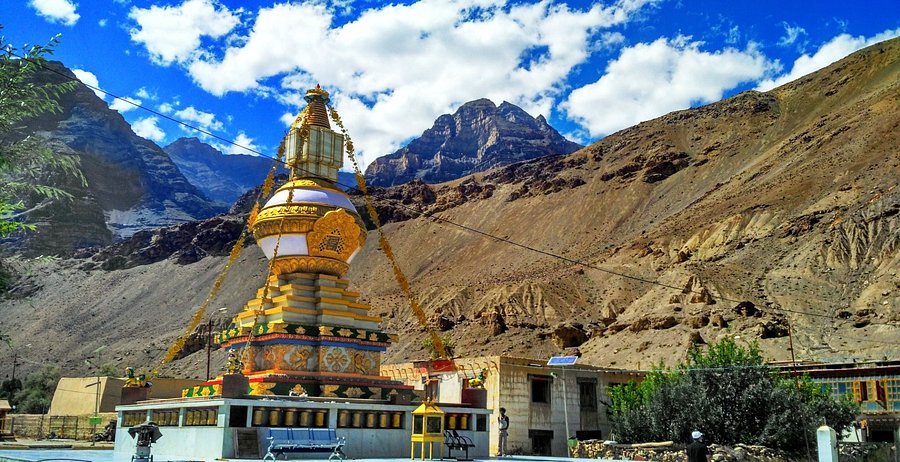
Era: Founded in 996 CE
Patron: Translator Rinchen Zangpo under King Yeshe‑Ö
Location: Tabo, Spiti Valley, Himachal Pradesh
Tabo is among the oldest continuously surviving Buddhist monasteries in India, known for its ancient frescoes, statues, manuscripts, and thankas. The complex includes nine temples, four stupas, and 23 chortens.
Protected by the Archaeological Survey of India, it remains an active spiritual center. The Dalai Lama held Kalachakra ceremonies here in 1983 and 1996, underscoring its importance
Phugtal Monastery
Cliffside cave monastery in Zanskar
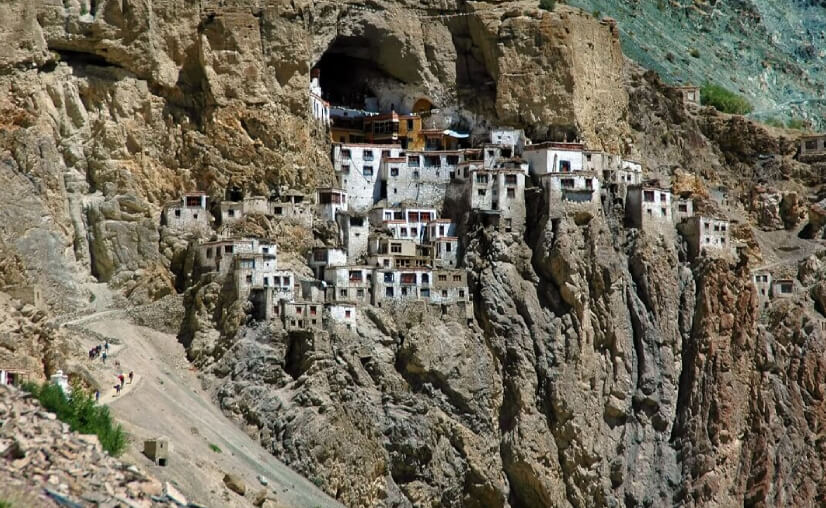
Era: Believed to originate around 12th century CE
Patron: Early Zanskar monks (anonymous)
Location: Zanskar Valley, Ladakh
Built into a cliff above the Lungnak River, Phugtal is accessible only on foot. With honeycomb-like cave dorms, temples, a library, and meditation halls, it offers unmatched seclusion.
The monastery sustains a small monastic community practicing ancient rituals among rugged mountains. It’s regarded as one of India’s most dramatic spiritual retreats
Namdroling Monastery (Golden Temple)
Largest Nyingma monastery in India
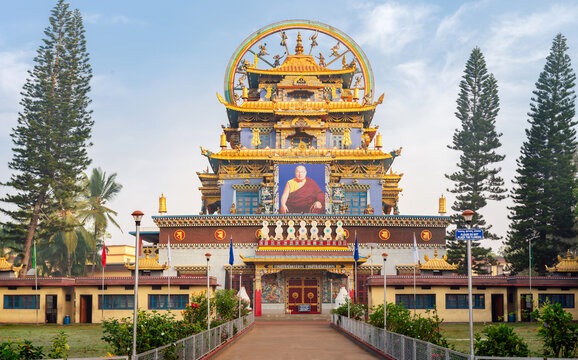
Era: Founded in 1963
Patron: Drubwang Padma Norbu Rinpoche
Location: Bylakuppe, Karnataka
Also known as the Golden Temple, this monastery serves as the largest Nyingma teaching center globally. The complex features golden statues of Buddha, massive prayer halls, and stunning murals.
Daily prayer sessions and Tibetan rituals take place openly. A thriving center of cultural refuge established after Tibetan exile
Mindrolling Monastery
Academic and meditative center in Dehradun
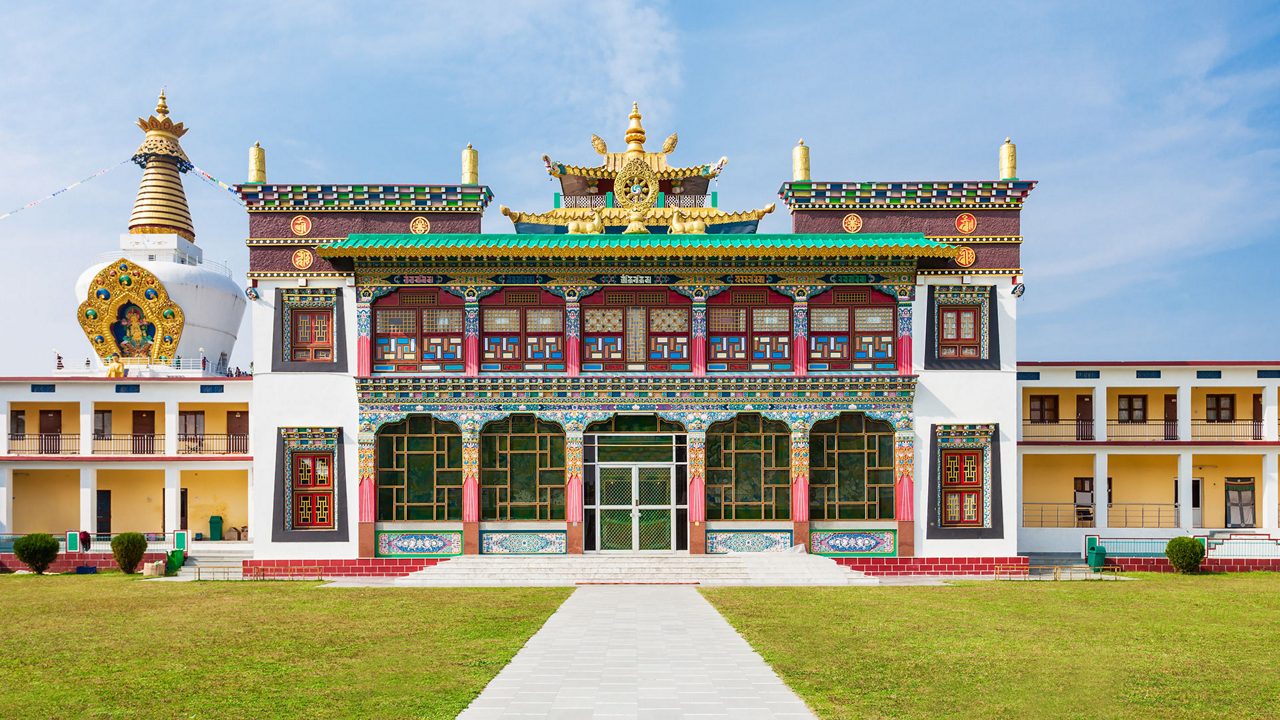
Era: Established in 1965 (Indian branch of Tibetan original)
Patron: Rigzin Terdak Lingpa lineage
Location: Dehradun, Uttarakhand
One of the six great monasteries of the Nyingma school, Mindrolling boasts the Great Stupa, lavish murals, and lush gardens. It is a hub for Buddhist study, retreats, and monastic learning.
The site blends tranquillity with architectural grandeur and is visited widely by practitioners and seekers.
Enchey Monastery
Solitary serenity above Gangtok

Era: Founded in 1840 (built up around 1909)
Patron: Lama Druptab Karpo
Location: Gangtok, Sikkim
Built atop a ridge overlooking Gangtok, Enchey belongs to the Nyingma tradition. The monastery is linked to legends of Guru Padmasambhava taming mountain spirits. Festivals like Singhe Chaam and Pang Lhabsol celebrate deities protecting the land, and ritual Cham dances are performed.
The site offers peaceful forested surroundings, panoramic views of the Kanchenjunga range, and a spiritual aura.
Diskit Monastery
The Heart of Nubra Valley
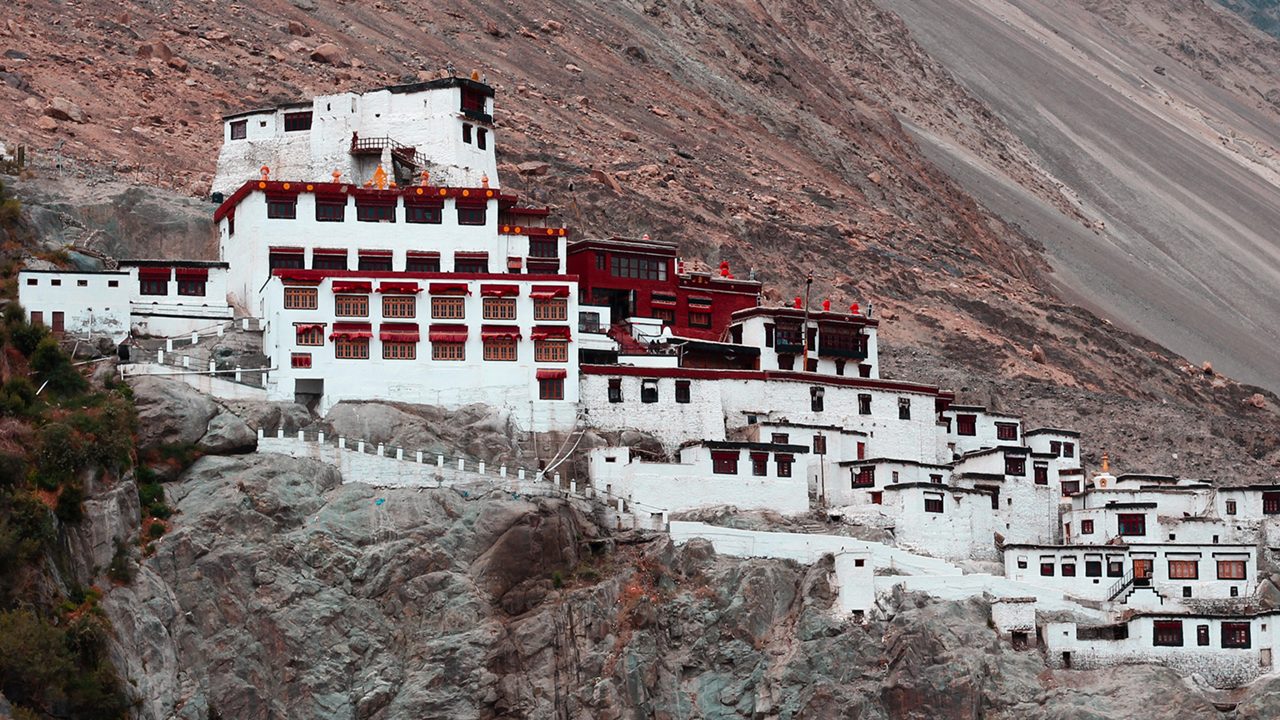
Era: Founded in the 14th century
Patron: Changzem Tserab Zangpo (disciple of Tsongkhapa)
Location: Diskit, Nubra Valley, Ladakh
Diskit Monastery is the oldest and largest in the Nubra Valley and belongs to the Gelugpa sect. Its most iconic feature is the 106-foot statue of Maitreya Buddha that overlooks the valley, symbolizing peace and protection. Set atop a hill, the monastery offers sweeping views of the Shyok River and desert landscape.
It hosts the Dosmoche Festival, filled with Cham dances and spiritual fervor. The site is both a visual and cultural landmark of Ladakh’s spiritual heritage.
Ghoom Monastery
Darjeeling’s Oldest Monastic Jewel
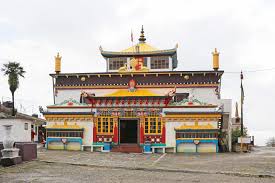
Era: Established in 1850
Patron: Lama Sherab Gyatso
Location: Ghoom, near Darjeeling, West Bengal
Ghoom Monastery, formally known as Yiga Choeling, is famed for its massive 15-ft statue of Maitreya Buddha and ancient Tibetan manuscripts. Nestled in the misty hills of Darjeeling, it belongs to the Gelugpa tradition and is known for its serene vibe, prayer flags, and spinning wheels.
The monastery plays a key role in preserving Tibetan Buddhism in eastern India and draws tourists, devotees, and students alike.
Alchi Monastery
Artistic Treasure of the Himalayas
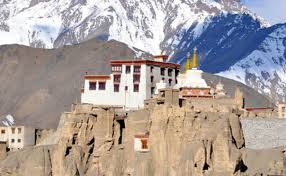
Era: Built in the 10th–11th centuries
Patron: Rinchen Zangpo (great translator)
Location: Alchi village, Ladakh
Unlike other hilltop monasteries, Alchi is built on flat ground near the Indus River. It’s renowned for Indo-Tibetan wall paintings, wood carvings, and unique Kashmiri-style art preserved over a millennium.
The monastery complex includes three major temples: Du-khang, Sumtseg, and the Manjushri Temple. A masterpiece of Himalayan art, Alchi is a must-visit for history and art enthusiasts. It is now protected by the Archaeological Survey of India.
Tawang Tashi Gompa (Ugyenling Monastery)
A Marvel of Indo-Islamic Architecture
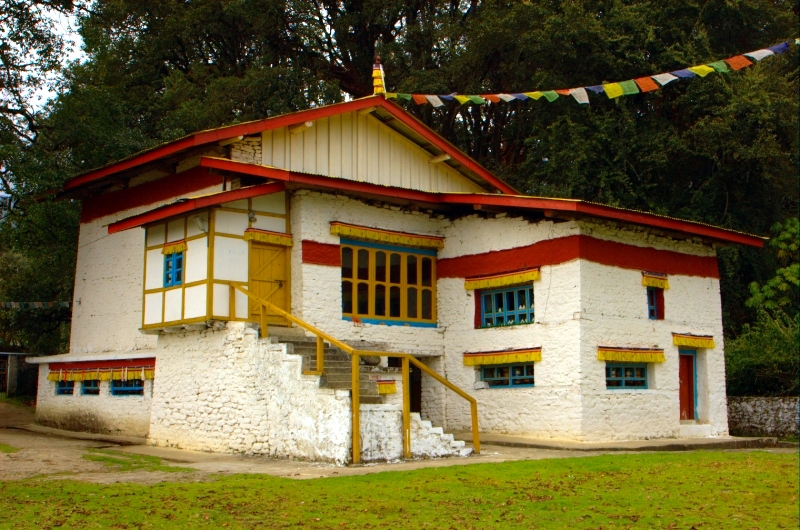
Era: Early 17th century
Patron: Tibetan Buddhist community
Location: Tawang, Arunachal Pradesh
This lesser-known gem is the birthplace of Tsangyang Gyatso, the 6th Dalai Lama. Surrounded by prayer wheels and ancient trees, the monastery offers an intimate glimpse into Tibetan Buddhist heritage.
Pilgrims visit to honor the spiritual significance of the site and its tranquil atmosphere. Though smaller in size compared to Tawang Monastery, it holds immense cultural and religious value for Buddhists across the Himalayas.
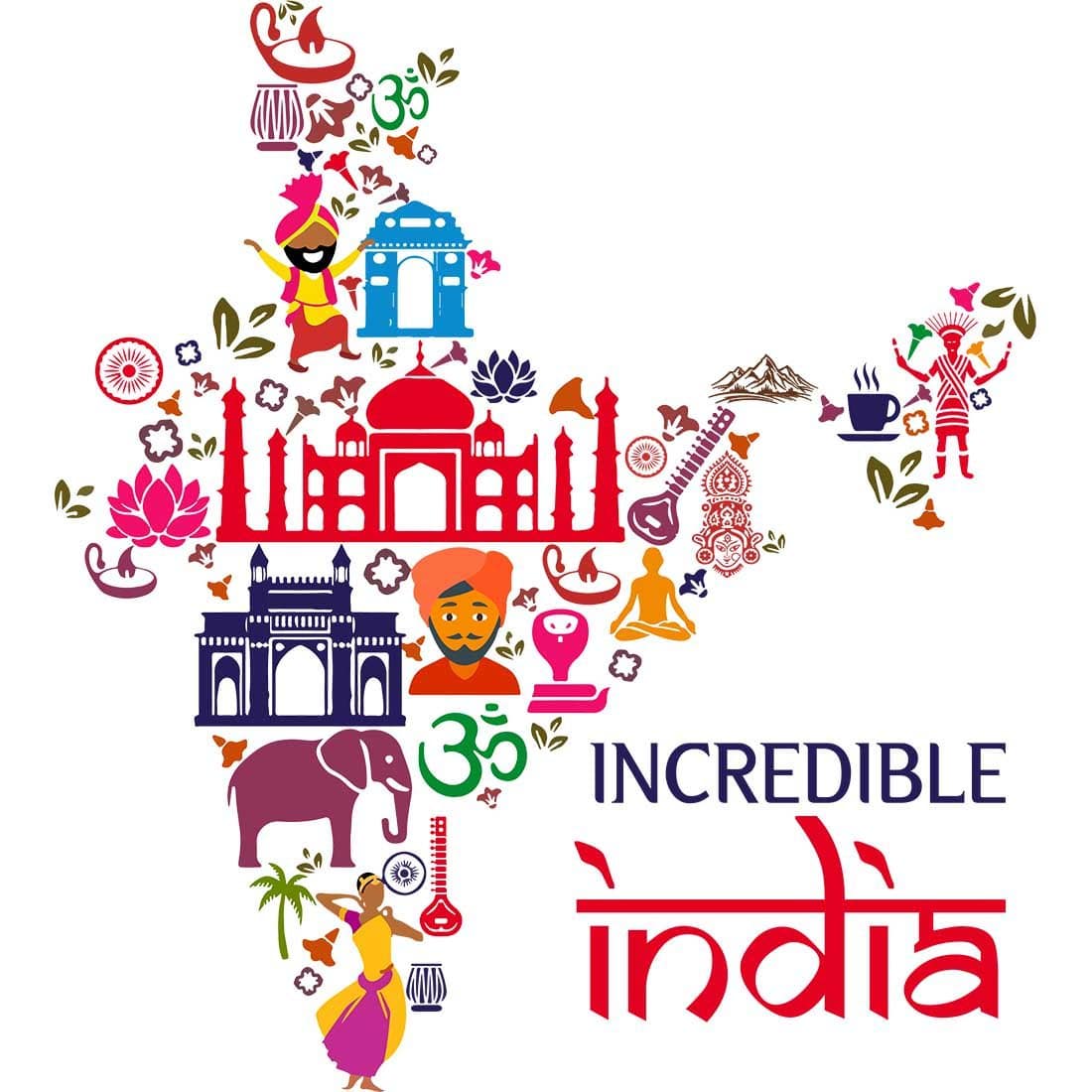
Andhra Pradesh Blogs
- Andhra Pradesh Cultural guide
- Places to visit in Andhra Pradesh
- Places to visit in Andhra Pradesh
- India’s most popular destination
- India’s archaeological marvels
